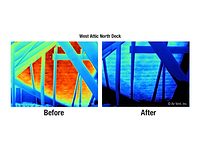According to industry practice, many contractors and subcontractors have long been provided “design” services for means and methods (sheeting and shoring, mechanical systems, steel connections, curtain walls, etc.). In the current marketplace owners realize that the contractor who is the best source to help bring a project to a reality is also often the best source for selecting the project delivery system, construction details and other aspects of the job.
In the 1997 version of the AIA A201, General Conditions, there is a new provision that brings the contractor and subcontractor into the design process.
Under Article 3.12.10, there are four separate parts to this new design provision. The first part prohibits design delegation unless a) such services are specifically required by the contract documents, or b) the contractor needs to provide such services in order to carry out its responsibilities for construction means and methods. This will ensure that the service is a clear delegation and the contractor can include this service in its bid, as opposed to the common situation wherein the contractor ends up performing this service for little or no fee by default or lack of inclusion in the contract documents.
The second part prohibits design delegation in states where such delegation would violate the state law. Check with an attorney in your state. The third part addresses the situation in which design is specifically required of the contractor. It is not enough that the documents “specifically” require the contractor to provide design; the design professional must also specify all performance and design criteria that such services must satisfy. This part requires the designer to review, approve and take other appropriate action on all the design submittals made by the contractor and its design professional for the purpose of checking the submittal for conformance.
If this clause pertains to your work, there are a few important notes that could keep you out of trouble:
1. Contractors must now check the documents carefully to determine their design responsibilities.
2. Contractors should check with their insurance carriers to determine their coverage for professional services.
3. Since the liability for the delegated design will “pass through” the contractor and because some design companies do not have deep pockets, the contractor must make sure they are properly insured.
4. The owner will have little control over the qualifications of a contractor’s design professional.
5. How is a contractor to bid a project when you do not have all the construction documents?
With the new requirements for design delegation come some of the very serious, even draconian, effects of such delegation. What if the design produced by a delegated design professional, hired by the contractor or subcontractor, is defective? The liability for this can hit the contractor or subcontractor in the wallet, especially if the contractor is not careful to make sure insurance coverage is available for the design professional’s mistakes.
In addition, what if a project is late or the work is disrupted due to the design work under the contractor or subcontractor? Is the contractor or subcontractor liable for delays and disruption caused to the project? Possibly?
In many contracts, contractors are subject to potentially enormous unforeseen consequential damage liability. That liability can exceed the ability of the contractor to pay. Owners are also open to large claims for damages that include high daily rates for overhead. It is not hard to envision a job where the claim exceeds the value of the work being performed!
Any contractor or subcontractor should make sure that he or she has the required insurance coverage before entering into a design delegation project, and then they should take very seriously the potential costs for failure by employing qualified, competent and trustworthy design professionals.


